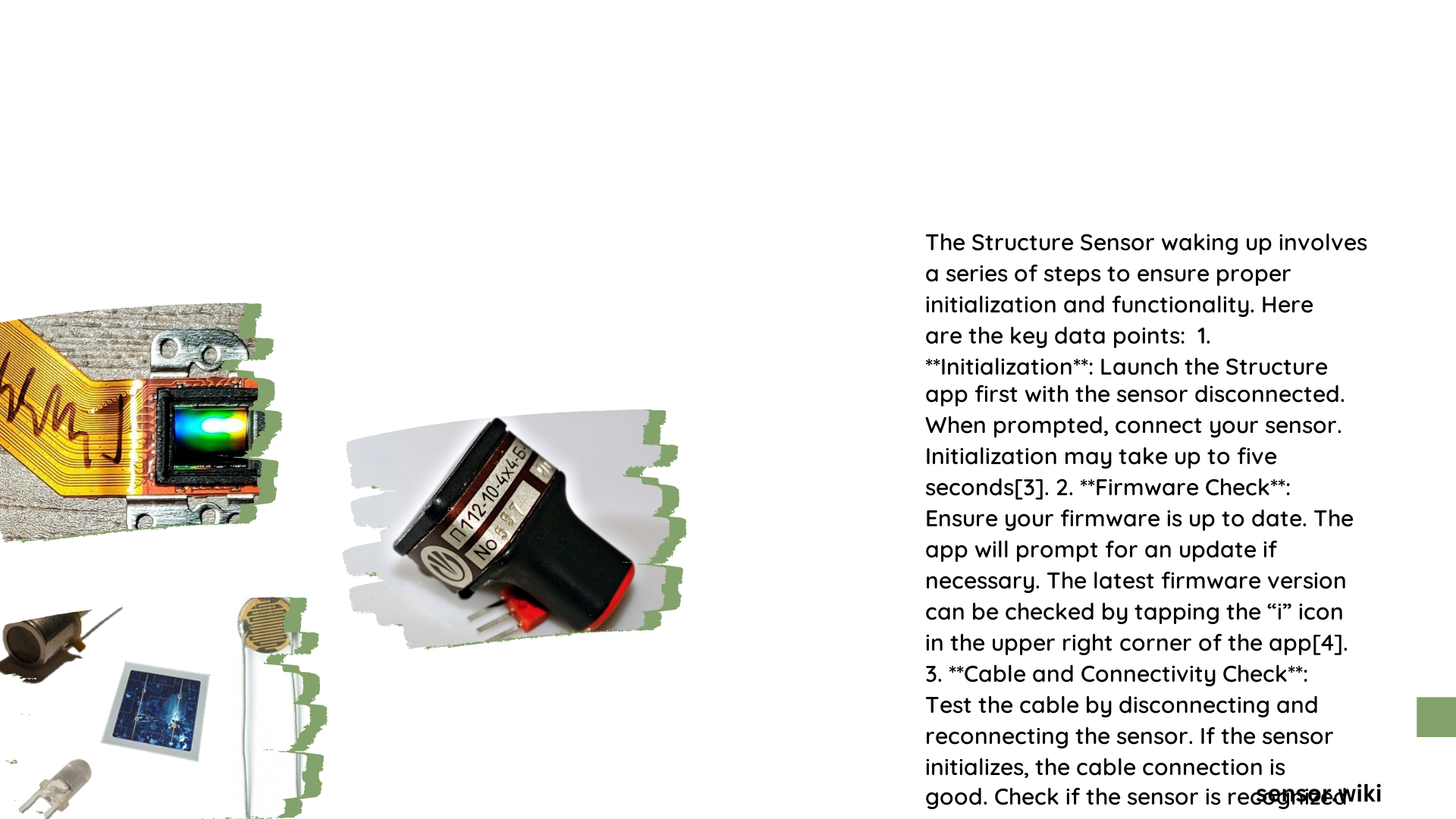The Structure Sensor represents a sophisticated 3D scanning device that occasionally encounters wake-up challenges requiring precise technical intervention. Users frequently experience power-up complexities involving battery management, connection protocols, and system initialization processes. Understanding the nuanced mechanisms behind sensor activation becomes crucial for maintaining optimal performance and resolving potential operational interruptions.
What Are the Primary Power Requirements for Structure Sensor?
The Structure Sensor demands specific electrical characteristics for successful wake-up and operational readiness. Here are the critical power parameters:
Voltage Specifications
- Input Voltage Range: 5V DC ± 0.25V
- Recommended Power Source: USB 2.0 compatible devices
- Charging Interfaces:
- AC Adapter (Barrel Jack)
- USB Hacker Cable
Current Consumption Metrics
| Power State | Current Draw |
|---|---|
| Charging | 500mA – 750mA |
| Active Mode | 350mA – 500mA |
| Sleep Mode | <50mA |
How Do LED Indicators Signal Sensor Status?

LED indicators provide critical diagnostic information during the wake-up process:
- Pulsing LED: Indicates active charging sequence
- Solid LED: Represents fully charged battery
- No LED Activity: Potential hardware malfunction
What Troubleshooting Steps Resolve Wake-Up Issues?
Systematic diagnostic approaches can resolve most Structure Sensor activation problems:
- Power Connection Verification
- Inspect charging cable integrity
- Test alternative power sources
-
Ensure secure connection points
-
Battery Health Assessment
- Check battery charge level
- Verify charging cable functionality
-
Monitor LED indicator behavior
-
Software and Driver Compatibility
- Update firmware
- Reinstall device drivers
- Check system compatibility
Can Environmental Factors Impact Sensor Wake-Up?
Several environmental conditions potentially influence sensor activation:
- Temperature Range: 0°C to 45°C (optimal performance)
- Humidity Tolerance: 20% – 80% non-condensing
- Electromagnetic Interference: Minimal exposure recommended
What Are Advanced Diagnostic Techniques?
Professional-level troubleshooting involves:
- Multimeter Voltage Testing
- Thermal Imaging
- Oscilloscope Signal Analysis
Recommended Maintenance Practices
- Regular firmware updates
- Periodic battery conditioning
- Clean connection interfaces
- Store in controlled environment
Expert Recommendations
- Always use manufacturer-approved charging accessories
- Avoid extreme temperature variations
- Perform quarterly system diagnostics
- Maintain updated software ecosystem
Potential Failure Points
- Degraded battery cells
- Damaged charging interfaces
- Firmware corruption
- Mechanical connection issues
When to Seek Professional Support
Contact manufacturer support if:
– Multiple reset attempts fail
– Persistent LED malfunction occurs
– No response after comprehensive troubleshooting
Technical Specifications Summary
- Device Type: 3D Scanning Sensor
- Power Input: 5V DC
- Charging Time: Approximately 2-3 hours
- Battery Capacity: 1800mAh Lithium-Ion
Conclusion
Successful Structure Sensor wake-up requires understanding complex electrical and software interactions. Systematic troubleshooting, combined with preventative maintenance, ensures reliable device performance.
